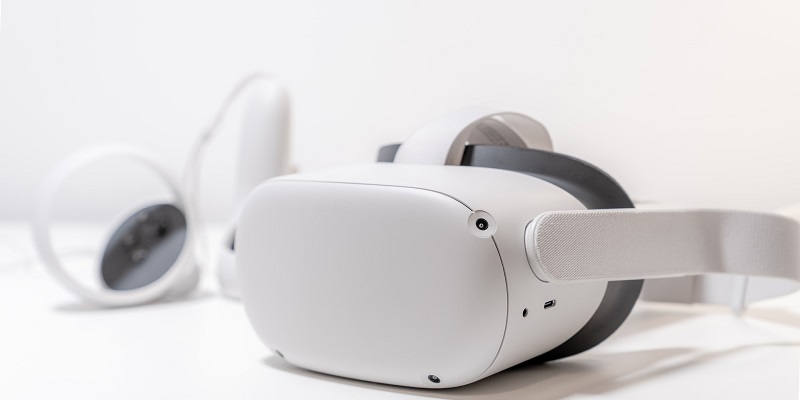Apple has finally unveiled its highly anticipated mixed-reality headset, named the Apple Vision Pro, which promises to push the boundaries of augmented and virtual reality experiences. The new device offers a unique combination of AR and VR experiences, shaking up the market for mixed-reality headsets. In this article, we will explore the features, specs, and pricing of Vision Pro.
Apple’s new AR/VR headset is called “Apple Glass” and is rumored to be announced soon
The Vision Pro is Apple’s first-ever mixed-reality headset and the latest addition to the company’s product line. Initially referred to as the “Reality Pro,” the device has finally been unveiled and aptly named the Vision Pro. The headset has been designed to offer an experience that seamlessly blends the real world with the digital world. With its sleek look and futuristic design, it is bound to draw the attention of tech enthusiasts and professionals alike.
Pricing for the Vision Pro and a comparison with the iPhone 14 Pro Max
Apple’s Vision Pro is not cheap with a price tag of $3,000, which is equivalent to the cost of three fully decked-out iPhone 14 Pro Max handsets. While the price may appear to be a tad steep, it is not surprising considering the advanced features and cutting-edge technology used in the headset’s design. Apple hopes to justify the price by delivering a truly immersive AR/VR experience to its users.
The accuracy of the “ski goggles” analogy used prior to the announcement is unclear without additional context
Before the official unveiling of the Vision Pro, tech reports and rumors had described the device’s appearance as similar to a pair of ski goggles. It turns out these rumors were accurate, as the headset sports an ergonomic design reminiscent of a high-tech skiing accessory. With its all-black exterior and sleek adjustable headstrap, the Vision Pro is an impressive sight to behold.
Audio experiences with Vision Pro, including the use of AirPods and personalized spatial audio
The Vision Pro promises to deliver an impressive audio experience through its Audio Pods, which are the next generation of earbuds. Each Audio Pod contains two individually amplified drivers that are capable of providing personalized spatial audio. The device also supports the use of AirPods, allowing for a deeper, more complete audio experience.
User interface navigation with the Apple Watch-style digital crown
To provide quick, smooth, and convenient control of the device, the Vision Pro comes equipped with a digital crown, similar to the one found on the Apple Watch. This digital crown offers precise control for scrolling, zooming, and navigating through menus, making the user experience of the headset ergonomic and intuitive.
Outward-looking cameras and their functionalities, including AR experiences and depth measurements
With multiple outward-facing cameras located on the headset, the Vision Pro can accurately map and measure the surroundings, delivering an exciting and immersive AR experience. Additionally, the cameras capture depth measurements that can be used to create 3D models of the environment. Users will also be able to record video and take pictures, giving them the freedom to capture reality and mix it with digital elements.
Limitations when wearing glasses with Vision Pro
One drawback of the design of the Vision Pro is that it is not ideal for glasses wearers. The sleek design of the headset does not accommodate glasses, which may lead to discomfort or inconvenience for some users. However, users have the option of using contact lenses or undergoing LASIK surgery to eliminate this potential issue.
High pixel density micro-OLED displays are used for the Vision Pro, surpassing other popular VR headsets
Apple is using some of the highest pixel density micro-OLED displays in the Vision Pro, surpassing popular VR headsets like the Oculus Quest 2 and Valve Index. This results in a stunning visual experience that brings mixed reality to life with vivid colors, contrasts, and high resolutions.
Technical specifications of the Vision Pro, powered by Apple’s M2 chip and dedicated R1 VR co-processor
The Vision Pro is powered by Apple’s ultra-fast M2 chip, which is paired with a dedicated R1 VR co-processor. Alongside these powerful chips, the headset features Wi-Fi 6 connectivity, U1 chip for spatial awareness, and a battery life of up to 6 hours of continuous use. These specifications ensure future-proofing, providing users with an unparalleled mixed-reality experience.
Apple’s Vision Pro is a well-designed and futuristic mixed-reality headset. It represents the company’s commitment to pushing the boundaries of AR and VR experiences. With its impressive audio capabilities, intuitive navigation, and advanced features, the Vision Pro is an impressive addition to the tech market. While the price may seem steep, Apple’s commitment to future-proofing the device ensures that it offers excellent value for money for tech-savvy users and professionals alike.

